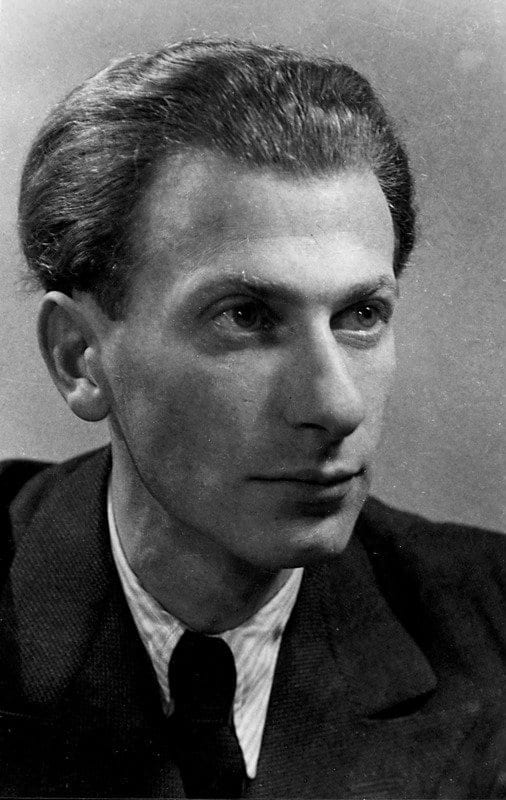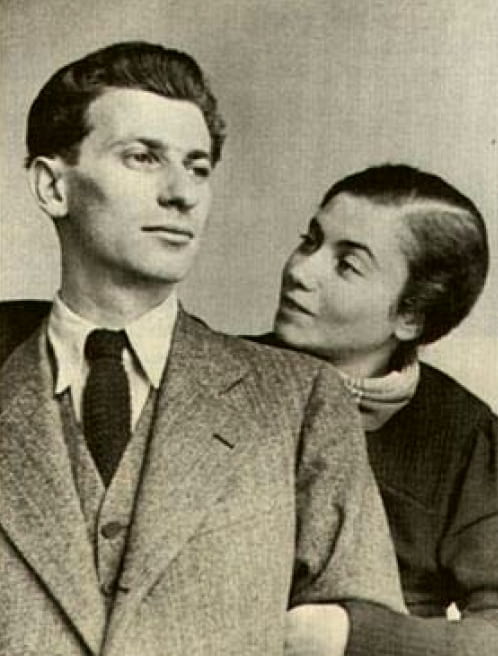
Guest post by Joan Hawkins, Associate Professor of Cinema and Media Studies at Indiana University.
Now it’s for me to live out what there’s left to me,
And I will not look back now, for neither memory
Nor magic will protect me from these omens in the sky.
— Miklós Radnóti, 1944
In 1944, just a year before the end of World War II, Adolf Hitler summoned the puppet fascist government of Hungary to Schloss Klesshelm in Salzburg. The Führer had demanded to see the Hungarian officials so that he could personally express his displeasure over their handling of “the Jewish question.” Jews had been “sheltered” in Hungary, Hitler said. They had been mistreated, removed to ghettos, murdered and beaten, forced to wear the yellow star, and — of course — removed from any position of influence or authority. They barely had enough to eat. But they had not been transported out of the country. And Hitler was furious that “de-Jewification” had not taken place.
On April 16, 1944, the first day of Passover, while Hitler berated Hungarian officials in Austria, Magyar police and the Occupying German Army raided Hungarian synagogues and put as many Jews as they could find in sealed train cars. Some 437,000 Hungarian Jews were transported in these cars, most of them to Auschwitz. An additional 36,000 Jews were deported from the Nagyvárad ghetto.
One of the deportees was the poet Miklós Radnóti.
His wife Fanni Gyarmati Miklósne Radnóti was not taken. Hiding under an assumed name, she remained in Hungary and spent the next two years frantically searching for news of her husband. When the war ended, she heard that some Jewish men, possibly her husband, had been sent to the notorious Bor forced labor camp in Serbia, and had been subsequently sent on a march that left thousands dead. She’d also heard that her husband’s stepmother and sister had died in Auschwitz. She was frantic.

Like so many, Fifi — as Fanni’s beloved husband called her — had hoped against hope that her husband would return to Budapest after the liberation of the camps. In 1945 and 1946, she and her friends looked for him everywhere, even Russian Prisoner of War camps. Friends feared for her health and for her sanity. But she was determined to find him, to save him if she could and, if she couldn’t, to find the notebook she knew he would have on his person. Then on August 1, 1946, an announcement of a newly discovered mass grave, containing the bodies of 22 Jewish labor servicemen apparently shot to death on the Bor March, appeared in Budapest’s weekly Jewish newspaper. It listed the names of most of the victims, calling on surviving family members to claim the bodies. Twelfth on the list: Miklós Radnóti. Fifi and Radnóti’s friends traveled to the funeral in Györ, Hungary. Two weeks later, the remains of the poet were reburied in Budapest, but not before his widow searched his body and found his notebook. That notebook, now called The Bor Notebook, provided some of the most powerful poetry of the Holocaust, what the Jewish people call the Shoah, the Destruction. It also cemented Radnóti’s legacy and reputation as one of Hungary’s greatest poets, and in fact one of the greatest poets of the Western World.
Hugo Perez’s 2007 film Neither Memory Nor Magic is a cinematic treatment of that notebook. Found in the front pocket of Radnóti’s overcoat, the notebook was soaked in bodily fluids when Fifi pried it loose. Laid out to dry in the sunlight, it later revealed poems, carefully handwritten on lined pages during the last six months of Radnóti’s life. Poems about slave labor in the Bor camp, and of the grueling three-month forced march from Serbia to the Moroccan province of Abda, where Radnóti was killed. But most amazingly, it also contained love poems addressed to his wife, and lyric stanzas celebrating the natural beauty of the places he moved through, revealingly a soaring spirit that even the Holocaust could not completely obliterate.
Radnóti’s poems serve as the backbone of Perez’s film and in that sense Neither Memory Nor Magic is not a conventional documentary of the events, so much as a reading and lyrical transcription of the poems Radnóti wrote as an act of defiance and humanity. The film is at once a love story, an examination of Radnóti’s patriotism, and a sobering view of the Hungarian Holocaust. The startlingly original poems are read in English translation and, movingly, in Hungarian. There are documentary moments. Perez traveled to Hungary and Serbia to visit the sites where Radnóti spent his final months, and some of the narration is harrowing. But the film soars in its attempt to find a cinematic language equivalent to the poetry. In one memorable section, still images are used to create a spectral three-dimensional environment, while “The Seventh Eclogue,” a poem addressed to Fifi, is read. “I sit up awake with the lingering taste of a cigarette butt in my mouth instead of your kiss, and I get no merciful sleep, for neither can I live nor can I die without you, my love, any longer.”
When I spoke to Perez recently about the IU Cinema’s scheduled screening of Neither Memory Nor Magic, he said, “It’s very important to show the film now.” Citing the over 166 anti-Semitic attacks that took place in New York last year, the filmmaker just sighed and said, “We have to remember.”
On October 27, IU Cinema will host a virtual film screening of Neither Memory Nor Magic with an introduction and interactive Q&A with writer/director Hugo Perez. Then, on October 30, join us again for Perez’s Jorgensen Program, which will take the form of a virtual conversation and interactive Q&A. Both events will be moderated by Joan Hawkins and comprise the series Hugo Perez: All That Still Matters at All.
This series is part of a Creative Collaboration between IU Cinema, The Writers Guild at Bloomington, the Center for Documentary Research and Practice, Borns Jewish Studies Program, The Media School, Hungarian Cultural Association, The Ryder, and at least seven academic units on campus.
An earlier version of this piece appeared in the March 2020 edition of The Ryder Magazine.

Joan Hawkins is an Associate Professor of Cinema and Media Studies at IU and the Chair of the Writers Guild at Bloomington. She learned of her own Hungarian heritage and the wartime arrest of her great-uncle on her 30th birthday, when her mother thought she was finally old enough to know. Her most recent publication is William S. Burroughs Cutting Up the Century, co-edited with Alex Wermer-Colan (IU Press 2019). She is currently co-editing two anthologies on 1968, and regularly teaches courses on fascism and cinema.